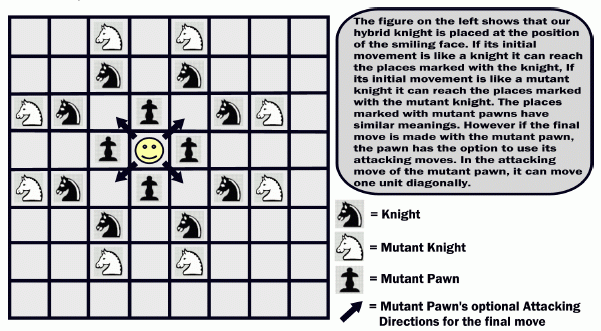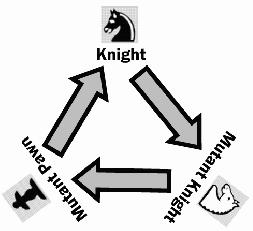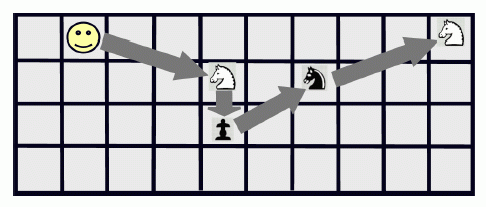
| The Hybrid Knight |
Hybridization is a very important concept in Biology, Chemistry and in many other fields. But is not at all an important concept in chess. Today we shall introduce a new chess knight, which can move like a normal knight, a mutant knight and like a mutant pawn in a chessboard.
The following figure illustrates the different types of moves of our hybrid knight. Please note that the knight is never allowed to land outside the board.

Unfortunately, the knight cannot move according to his own will. It maintains the following cyclic order when it chooses its movement. It means if the knight's first movement is like a knight, the second movement will be like a mutant knight, the third movement will be like a mutant pawn, the fourth movement will be again like a knight and so on. The same cycle applies if the hybrid knight starts with the mutant knight move or with the mutant pawn move. The cycle to be followed is shown in the given figure.

Given the size of the square shaped board, your job is to find the minimum number of moves required by the hybrid knight to reach from one board position to another. The board positions are numbered in row major order from top to bottom. So in a (8×8) chessboard the identifier of the top-left corner is 1 and the identifier of the bottom right corner is 64.
5 2 10 15 10 20 10 1 2 10 0 10
Set 1: 1 2 Set 2: 4
Note: The illustration given below shows the movement required for set 2.
Here to go from 2 to 10 in a
10×10 board the hybrid knight uses its mutant knight move first to go to cell number 15.
Then it uses the mutant pawn move to go one row down to cell number 25. The third move is like a
regular knight, it takes our knight to cell number 17. The fourth and final move is a mutant
knight move that takes our knight to the destination. We're showing the first 4 rows of the
10×10 board here.
